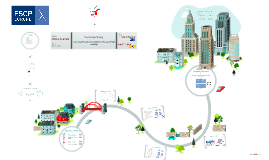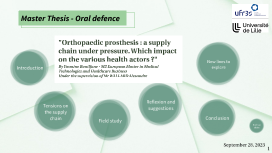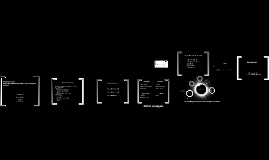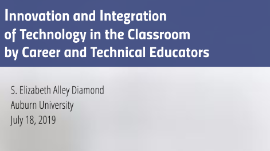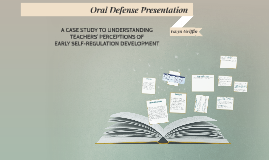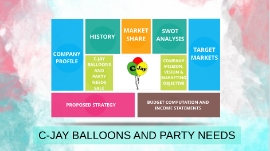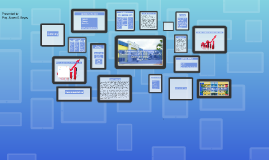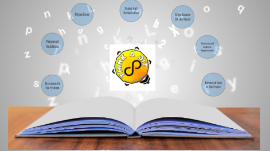Oral Defense Presentation
Transcript: Innovation and Integration of Technology in the Classroom by Career and Technical Educators Recommendations S. Elizabeth Alley Diamond Auburn University July 18, 2019 Innovation and Integration of Technology in the Classroom by Career and Technical Educators References References Barr, D., & Sykora, C. (2015). Learning , teaching and leading: A comparative look at the ISTE standards for teachers and UNESCO ICT competency framework for teachers (White Paper). Retrieved from https:// www.iste.org/resources/product?id=3612&name+Learning%2C+teacher+and+leading Celik, K. (2013). The relationship between individual innovativeness and self-efficacy levels of student teachers. International Journal of Scientific Research in Education, 6(1), 56–67. Retrieved from http://www.ijsre.com Çoklar, A. N., & Özbek, A. (2017). Analyzing of relationship between teachers’ individual innovativeness levels and their tpack self- efficacies. Journal of Human Sciences, 14(1), 427. https://doi.org/10.14687/jhs.v14i1.4413 Ertmer, P. A., & Ottenbreit-Leftwich, A. T. (2010). Teacher technology change: How knowledge, confidence, beliefs, and culture intersect. Journal of Research on Technology in Education, 42(3), 255–284. https://doi.org/10.1080/15391523.2010.10782551 Ertmer, P. A., Ottenbreit-Leftwich, A. T., Sadik, O., Sendurur, E., & Sendurur, P. (2012). Teacher beliefs and technology integration practices: A critical relationship. Computers and Education, 59(2), 423–435. https://doi.org/10.1016/j.compedu.2012.02.001 Geoghegan, W. H. (1994). Whatever happened to instructional technology? In Annual Conference of the International Business Schools Computer Association (pp. 1–16). Retrieved from https://eprints.soton.ac.uk/260144/ Goldsmith, R. (1991). The validity of a scale to measure global innovativemess. The Journal of Applied Business Research, 7(2), 89– 97. https://doi.org/10.19030/jabr.v7i2.6249 Hew, K. F., & Brush, T. (2007). Integrating technology into K-12 teaching and learning: Current knowledge gaps and recommendations for future research. Educational Technology Research and Development, 55(3), 223–252. https:// doi.org/10.1007/s11423-006-9022-5 Hurt, H. T., Joseph, K., & Cook, C. D. (2013). Individual innovativness (II). Retrieved from http://www.midss.org/sites/default/ files/individual_innovativeness.pdf Hurt, T., Joseph, K., & Cook, C. (1977). Scales for the measurement of innovativeness. Human Communication Research, 4(1), 58– 65. https://doi.org/10.1111/j.1468-2958.1977.tb00597.x ISTE. (2017). ISTE standards for educators. Retrieved from https://www.iste.org/standards/for-educators Kim, C. M., Kim, M. K., Lee, C. J., Spector, J. M., & DeMeester, K. (2013). Teacher beliefs and technology integration. Teaching and Teacher Education, 29(1), 76–85. https://doi.org/10.1016/j.tate.2012.08.005 Kotrlik, J. W., & Redmann, D. H. (2009). Analysis of teachers’ adoption of technology for use in instruction in seven Career and Technical Education programs. Career and Technical Education Research, 34(1), 47–77. https://doi.org/10.5328/CTER34.1.47 References Region 10 ESC. (2018). Digital Fluency. Retrieved from https://www.region10.org/programs/digital-learning/digital-fluency/ Rogers. (2003). Diffusion of Innovations (5th ed.). New York: Free Press. Tsai, C. C., & Chai, C. S. (2012). The “third”-order barrier for technology-integration instruction: Implications for teacher education. Australian Journal of Educational Technology, 28(6), 1057–1060. https://doi.org/10.14742/ajet.810 Vongkulluksn, V. W., Xie, K., & Bowman, M. A. (2018). The role of value on teachers’ internalization of external barriers and externalization of personal beliefs for classroom technology integration. Computers and Education, 118(2018), 70–81. https://doi.org/10.1016/j.compedu.2017.11.009 Wohleb, E. (2011). The integration of hardware, software, and technology tools into the classroom of business/marketing educators in Alabama (Doctoral dissertation). Retrieved from http://etd.auburn.edu/bitstream/handle/10415/2591/ WOHLEB_DISSERTATION.pdf?sequence=2&isAllowed=y Yorulmaz, A., Çokçalişkan, H., & Önal, H. (2016). Determination of classroom pre-service teachers’ state of personal innovativeness. Journal of Education and Training Studies, 5(1), 28. https://doi.org/10.11114/jets.v5i1.1947 Refences Introduction Barr & Sykora (2015) Barriers Kotrlik & Redmann (2009) ISTE Standards Diffusion Theory "Future innovation in education and technology will continue to disrupt... industry and enterprise, presenting challenges, as well as, unprecedented opportunities for economic growth and human development." (p. 4) Barr and Sykora (2015) in an ISTE White Paper titled "Learning, Teaching, and Leading" share that technology is changing at an alarming rate and that, "Education has not fully leveraged these innovations to advance technology-powered pedagogy, and yet, educators in every country are being called upon to prepare students for a world where they can adopt, 1st As






